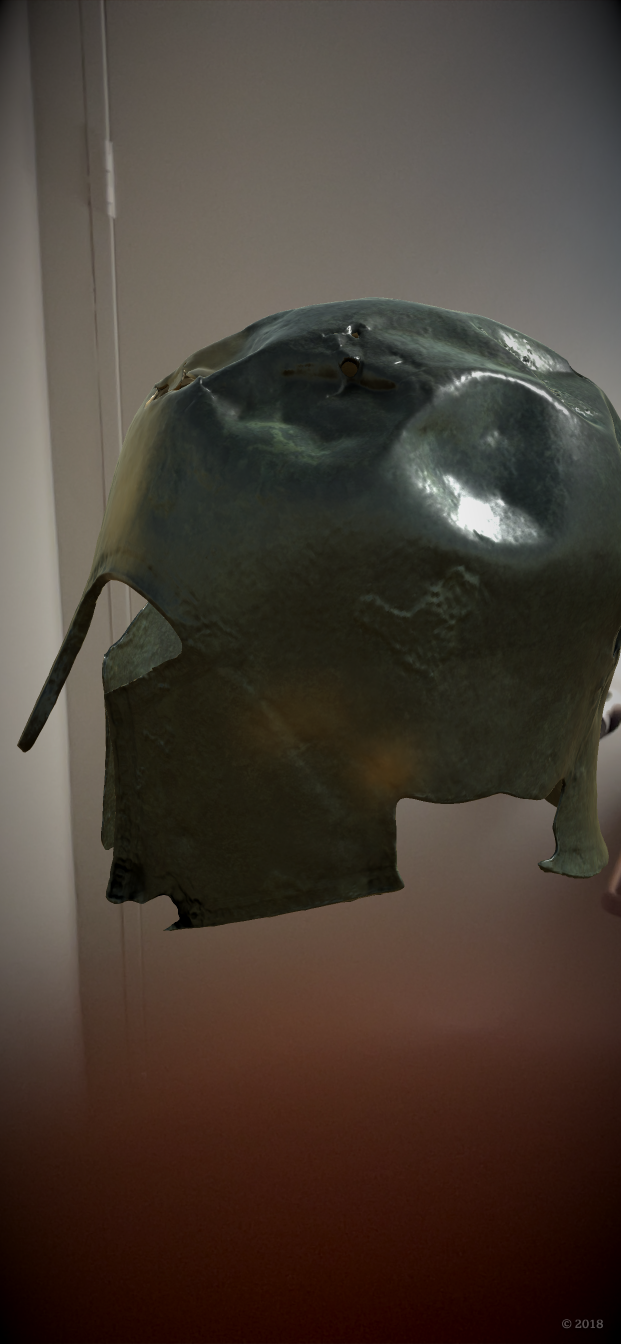Augmented Reality
- Zeyba Orya
- Mar 28, 2023
- 2 min read
Updated: Apr 12, 2023
Augmented Reality (AR) is a technology that enables the combination of virtual objects and real-world environments through digital means (Bower et al., 2014). Interestingly, interacting with and experiencing realistic settings undoubtedly promotes and fosters student creativity (Billinghurst & Duenser, 2012; Kerawalla, Luckin, & Woolard, 2006). The reason for this is because pupils get the chance to convey their ideas, create their own environments, visualize concepts, and curiously explore virtual models (Billinghurst & Duenser, 2012; Kerawalla, Luckin, & Woolard, 2006).
Civilisations AR
As an emerging technology, Civilisations AR is a tool which enables user’s to delve into the history of civilisations through an augmented experience. Ancient China, Rome, Greece, and Egypt are among the civilisations that are addressed, and they are accompanied by a variety of artefacts that have information relevant to them. Providing an immersive learning experience encourages students to be more imaginative towards their work and projects. An advantage of Civilisation AR is that it can perpetrate a collaborative learning environment wherein students can interact with one another, engage and share their unique ideas. All of which can promote creativity as it lets student’s think outside the box, experiment together and receive feedback.

CC: Zeyba Orya

Curriculum Link
Civilisations AR is an effective and innovative app to use when teaching the Stage 5 History K-10 syllabus, specifically “how the beliefs and values of the ancient society are evident in practices related to” (NESA, 2018, p 59), funerary practises in Ancient Egyptian society. As an activity, students can engage in a role-playing scenario as an archaeologist, historian or an ancient Egyptian citizen whereby they have to explain or demonstrate significant funerary practises. Such interactive and immersive experiences allow students to think outside of the box, collaborate with peers and use their imagination. All of which can foster their creativity.
Limitation
Although Civilisations AR can be interactive, it may actually overshadow the education content and divert students attention from the historical subject. This can significantly can impede students' learning by hindering their ability to fully engage with the material. Additionally, while Civilisations AR offers a great deal of historical information and the opportunity to experience real ancient artifacts, it is not comprehensive enough to cover a wide range of historical topics. Therefore, it may pose as a limitation for teacher’s when trying to incorporate the app into the classroom instruction since it may not align with the curriculum being taught.
References
Billinghurst, M., & Duenser, A. (2012). Augmented reality in education. In A. Marker & M. Osterwalder (Eds.), Proceedings of the 8th IEEE International Symposium on Mixed and Augmented Reality (ISMAR) (pp. 247-248). IEEE.
NSW Education Standards Authority. (2012). History K–10 Syllabus. Retrieved from https://educationstandards.nsw.edu.au/wps/portal/nesa/k-10/learning-areas/hsie/history-k-10
Kerawalla, L., Luckin, R., & Woolard, A. (2006). Making it real: Exploring the potential of augmented reality for teaching primary school science. Virtual Reality, 10(3-4), 163-174. https://doi.org/10.1007/s10055-006-0036-6








Kyle Lamont [09/04/2023]
Hi Zeyba,
I enjoyed reading through this blog post, as you begin with a definition of what AR is and what it means for technology as we know it. You then include a video to support your points and show visual examples of what AR is capable of in the real world.
I like the real use videos of AR programs such as 'civilisations AR' which allows you to look at historic items as if they were in front of you.
You did a great job linking AR to the syllabus, deciding to focus on stage 5 History as this will provide students with visual examples of what they're learning about.
The inclusion of critiques is also…